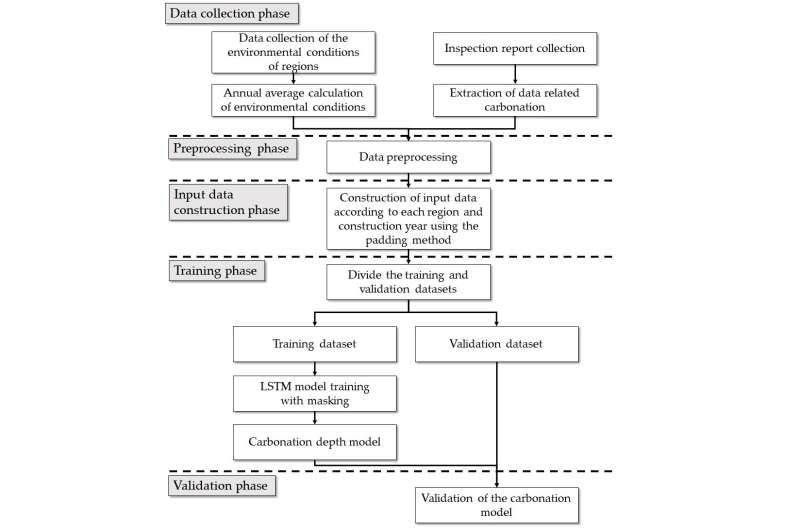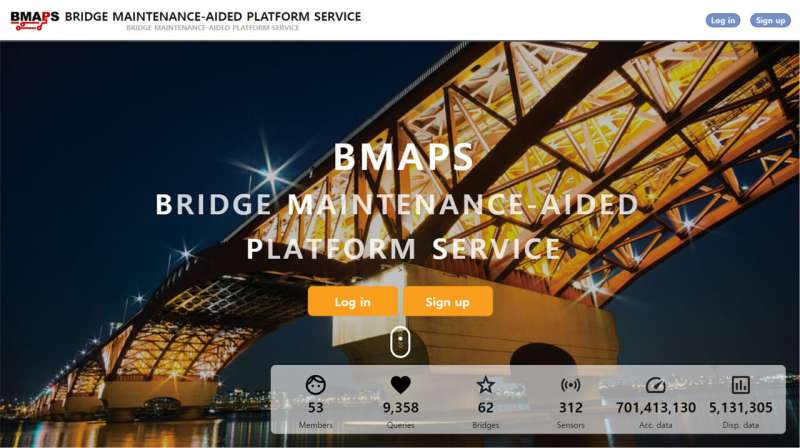New way to predict the damage and aging of bridges
The Korea Institute of Civil Engineering and Building Technology (KICT) announced that it has developed D.N.A. (Data, Network, and AI) technologies to predict the levels of damage and aging of bridges for preventive maintenance.
As of 2021, the percentage of Korean bridges aged 30 years or more stands at a relatively low 12.5%. However, this ratio is expected to increase in the next decade to 39.3% by 2031 and rapidly spike up to 76.1% in 20 years. For the preemptive management of these aging bridges, the levels and characteristics of performance deterioration for each bridge need to be understood by accumulating comprehensive and strategic data as well as technology that can predict the degree of obsolescence of the bridges based on the collected data.
A KICT research team within the Department of Structural Engineering Research, led by Dr. Ki-Tae, Park, has garnered more than 5 million data elements either directly or indirectly related to aging of bridges from 2021 to 2022.
An AI learning model was applied on the established data to develop a prediction curve algorithm that can forecast the spread of damage over time, including a carbonation model of the bridges. The credibility of the technology was further improved by securing additional data on the bridges using IoT technology onsite and from experimental data that considers the environmental conditions of Korea.

The developed bridge aging prediction technology incorporated artificial intelligence technologies to analyze aging data in order to forecast the future level of damage to the bridges. The prediction accuracy of the aging level assessment algorithm stands at 90.8% as of the end of 2022, which is expected to be further improved up to 95% by 2023. Within the international technical level, academic research is in progress and it was investigated with accuracy level of about 85% as of 2021.
KICT plans to provide the results derived from the developed bridge aging prediction technology via a platform where multiple customers can utilize the data. The BMAPS (Bridge Maintenance-Aided Platform Service) platform will offer prediction results and diverse bridge maintenance information services, such as the load-carrying capacity (the ability to support weight) predictions for aging small and medium-sized bridges.
The platform will be open to the public in 2nd half of 2023. The platform will be offered in Korean for its use within Korea. In consideration of the development status, an English version of the platform will be prepared by 2024, through which international users can also benefit from the platform as a source of reference.
As the research findings can be used as an objective data source to calculate the maintenance costs of bridges, it will significantly contribute to the preventive maintenance of bridge facilities, thereby reducing massive potential maintenance costs that may occur in the future.

Dr. Ki-Tae, Park, the lead researcher, commented that “securing preventive maintenance information on bridges by using various data, AI, and network-based platform technologies will contribute to the longevity of bridges” and further added, “that the prediction services will expand in the future to include not only bridges but a wide range of infrastructure.”
The paper is published in the journal Applied Sciences.
More information:
Tae Ho Kwon et al, Long Short-Term Memory-Based Methodology for Predicting Carbonation Models of Reinforced Concrete Slab Bridges: Case Study in South Korea, Applied Sciences (2022). DOI: 10.3390/app122312470
Provided by
National Research Council of Science & Technology
Citation:
New way to predict the damage and aging of bridges (2023, February 21)
retrieved 21 February 2023
from https://techxplore.com/news/2023-02-aging-bridges.html
This document is subject to copyright. Apart from any fair dealing for the purpose of private study or research, no
part may be reproduced without the written permission. The content is provided for information purposes only.
For all the latest Technology News Click Here
For the latest news and updates, follow us on Google News.
